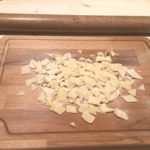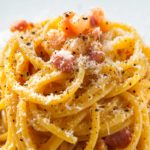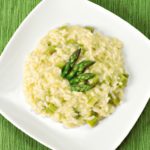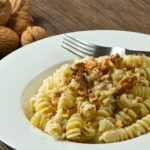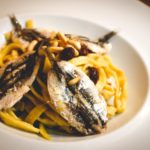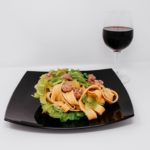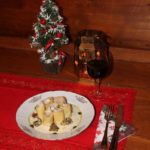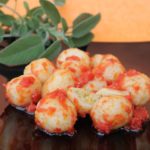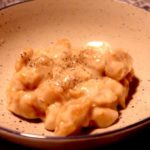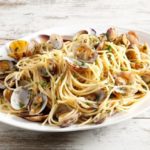The stuffing of this gnocchi is very similar to the one of Ascoli olives, a skilled mix of meats cooked in a soffritto, whose taste is made lighter by a touch of lemon zest. The only complicated phase is finding the procedure to fill the gnocchi; I think that using a piping bag makes the operation a lot easier.
It is quite hard not to find intriguing recipes in Italy: its regional cuisine is extremely rich and varied and, Marche region, not very known by mass tourism, offers us wonderful dishes with meat, vegetables, and fish.
In the near future, I am going to propose some Marche recipes: I learned to appreciate various dishes thanks to some sibling who introduced me to many treats. In addition, some trips in which I explored wonderful restaurants made me appreciate this region even more.
The scarce knowledge of the regional treasures contributed to maintaining an Italian atmosphere, not wretched by the mechanisms of great masses of tourists.
I have always been thinking that the real atmosphere of a country is much better seized in small towns, which tend to be more conservative and contribute to keeping the great Italian culinary tradition alive.
Now the region is living a new awakening, also as a reaction to the destructions caused by an earthquake, which stroke it in 2016: concerts like “Marche Rise Again” and new cycles of art exhibits propose a panoramic view of artistic treasures of the region, like, for instance, the cycle dedicated to Lorenzo Lotto.
Prep Time: 50 minutes | Cooking Time: 40 minutes | Total Time: 1 hour + 30 minutes | Yield: Makes 4 servings.
Ingredients for the stuffing
- 2,5 pounds (1 kg) white, russet or other starchy potatoes, steamed and peeled
- 2 cups (250 g.) pastry or “00” flour, plus more as needed
- 10 oz. (300 g.) mixed meats (chicken breast, pork, and veal)
- 3 egg yolks
- 1 carrot, finely minced
- 1 onion, finely minced
- 1 celery stalk, finely minced
- ½ glass of white wine
- ½ glass water
- ¼ organic lemon grated zest
- 1 tablespoon grated Parmigiano Reggiano or Grana Padano
- 2 tablespoons olive oil
- 1 tablespoons butter
Ingredients for the sauce
- 2 tablespoons olive oil
- 2 garlic cloves
- 14 oz. (400 g.) finely chopped tomato sauce
- Sea salt
Instructions for making the gnocchi
Heat butter and oil in a saucepan and sauté the vegetables in it. When they are cooked, add the meats roughly chopped. Cook the meats, adding water and wine. Stir the meats and, when the wine has evaporated, cover with a lid and make the meats simmer for half an hour. When it is cooked, take the meats, draining them from the cooking liquid, and put them in a mixer.
Filter the cooking liquid with a sieve, and put it aside. Ground the meats in the mixer, then add the yolks, the Parmigiano, the lemon zest, and the cooking liquid. Mix again. Move the stuffing to a piping bag.:
While the meat is cooking, steam the potatoes for the gnocchi.
For making gnocchi, follow the instructions in this recipe.
Divide the dough into parts bigger than usual, since it must contain the filling. Stuff the gnocchi and close the little balls by rolling them quickly between the palms of your hands.
Lay the gnocchi on a paper tray previously sprinkled with flour.
Instructions for making the sauce
In a non-sticking pan, sauté garlic cloves in oil and discard them when golden. Add the tomato and make it simmer for 10 minutes.
Cook the gnocchi in boiling salted water for few minutes, it can be drained when it floats and poured directly in the pan with the sauce. I suggest using a pastaiola or draining them in batches, using a slotted spoon.
